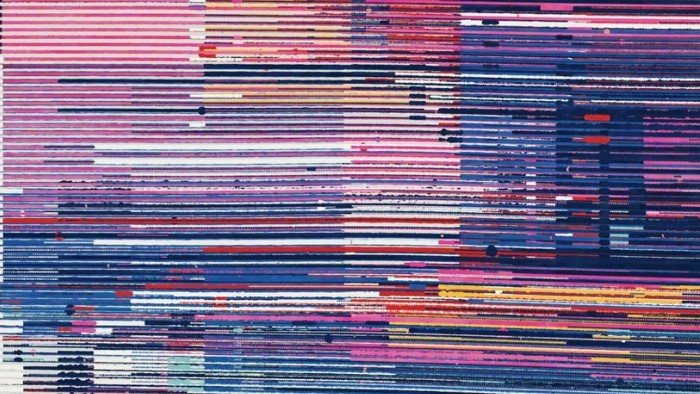
Forget the old-school charms of the BBC’s Antiques Roadshow. Art valuations today are more likely to rely on artificial intelligence to help close the gap between educated guesswork and reality — as much as this mysterious market will allow.
“We are using AI for efficiency. It can process millions of data points instantly, then sort, clean and label the information. It is not ‘ask ChatGPT the value of my art’,” says Caroline Taylor, founder of Appraisal Bureau, a young business headquartered in New York.
Valuing art has long been an inexact business, but it supports industries including insurance, banking and the tax authorities. Insurers and firms that lend against art often stipulate annual valuations, generally conducted on site, while in the US, the Internal Revenue Service requires a qualified appraisal for collectibles worth more than $5,000 to claim generous charitable relief. Lawsuits, notably last year’s failed $377mn damages claim by Russian billionaire Dmitry Rybolovlev against Sotheby’s, often call on appraisers as expert witnesses.
“Getting updated valuations is a big headache, collectors just dread it,” says Taylor, a qualified appraiser who previously worked as a private art adviser. She recalls, “I hired one of the big appraisal firms for a client, the process took two and half months, and it cost about $3,000 for a PDF with some auction comps [comparisons to auction prices].” In some cases, Taylor says, reports “were based on only one data source”. Her processes now involve 20 what she calls “ingestion points”, ranging from gallery exhibitions to wider economic indicators, each of which has “millions of data points behind it”.
Appraisal Bureau, which launched in 2021, is gaining ground in the art market. This is as much because of its independence as its technology (unlike other valuation firms, it doesn’t run any art-adjacent businesses such as advisory, lending or sales). “A standalone appraisal company that leverages AI is providing welcome transparency and neutrality to the art market,” says Rebecca Fine, CEO of Athena Art Finance, an independent speciality art lender.
This month, Appraisal Bureau’s platform will go live with an automated valuation service for collectors. Early adopters include the investment firms Oaktree Capital and Hivemind Capital Partners — the latter runs a fund for digital art, something that Taylor welcomes. “We still have quite a few clients that are NFT [non fungible token] funds, despite what’s happened in those markets.” Here, though, misinformation abounds. Hivemind’s “One One Overflow” (2022), an NFT by Texas generative artist Tyler Hobbs that looks like a broken TV screen, has a “top offer” on the NFT marketplace OpenSea of 0.008 WETH (about $21) — such prices can be posted by anyone, including bots, Taylor says — versus Appraisal Bureau’s six-figure valuation.
The NFT phenomenon has proved an inspiration to the business. “We look at them to inform how we handle data,” Taylor says. “NFTs have labelled traits that make valuations much easier than for fine art. All the data is on the blockchain, it’s already structured, so on our pipeline we structure fine art in the same way.” She gives an example: “We create labels, like Rashid Johnson ‘Anxious Red’ works sell for better prices than his ‘Blue’ [versions].”

Other dynamics chime with the shifting demographics of today’s scene. “If you look at the collectible market now, there is more buying at lower levels, which is harder to quantify,” says Charlie Horrell, head of fine art and luxury brands at Marsh Insurance. He finds too that digital art and NFTs are increasingly in the mix — Marsh was the first broker to place a pure NFT policy in the market, he says — while today’s fluctuating market requires more regular revaluations. Overall, he says, “AI gives a clearer idea of insurable value.”
Traditional appraisal firms are also taking note. “When I value a painting, which I do several times a day, I look at the picture, then go on to a database to find other similar works. They won’t be exactly the same, and won’t have sold five days ago, so you have to adjust accordingly, take into account things like different dimensions and the market backdrop. All of this can be sped up by AI,” says Harry Smith, executive chair of Gurr Johns, and an expert witness in the Rybolovlev vs Sotheby’s suit. Smith’s business recently launched a machine-learning-based collections management tool, called Art Metadata, which supplies users with information relevant to their works.
Smith emphasises, though, that once the AI has pooled the data, “the next stage, when looking at the relative quality of one work versus another, has to be done by a specialist. Final judgment requires an expert.” Taylor’s firm also uses qualified appraisers to oversee results. For example, she says, if the data includes a reported sale price from an art fair, “we check with the gallery.”
All the same, AI’s accuracy has vastly improved in just a few years, says Alessandro De Stasio, founder and CEO of online sales and collections management platform Artscapy, which uses an AI-based methodology to offer services including valuations and loans. He compared sales prices from the platform against their AI valuations and found that the machine’s value was correct about 65 per cent of the time in 2022, a year after he launched the business. By 2023 accuracy was at 75 per cent, he reports, and since 2024 this has hit 85 per cent. “The incremental percentage is the one that is increasingly hard to fill with the current models. However, I can see this closing within 18 months,” De Stasio says.
There are, meanwhile, varied valuations in this complicated market. “Retail replacement” is the replacement value of a work (including metrics such as auction house fees) and is generally used by insurers. “Fair market value” represents what a dealer would pay today for a work, and the difference between the two can be as much as 40 per cent, experts say. Auction house estimates, which can look like valuations, are more likely the result of intense negotiations with consignors and can be set deliberately low, for example to encourage bidding. Legal situations sparked by divorce or probate can also affect the preferred levels of pricing.
While precise values might always remain an art, AI’s proponents believe that improving efficiencies and liquidity could help drag the art market’s mechanisms into the 21st century. “AI means we can offer valuations and appraisals at a fraction of the cost and is giving us back a lot of time,” De Stasio says.
For now, though, Smith believes old-school valuation still has its place. “AI is going to make our businesses better, but we are not all out of a job.”









